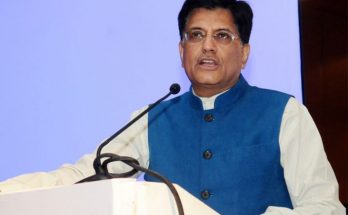 Did anyone expect the recent Budget 2014 to have a serious content on women’s welfare and safety? Yes and no. In the aftermath of a historical and sustained outrage and advocacy for women’s safety, it was being speculated that some thought and funds would be spared for the same.
Did anyone expect the recent Budget 2014 to have a serious content on women’s welfare and safety? Yes and no. In the aftermath of a historical and sustained outrage and advocacy for women’s safety, it was being speculated that some thought and funds would be spared for the same.
Yet, the history of indifference, silence and even insensitivity on the subject demanded that the expectations be low. It is gratifying to note that women’s safety did figure in the Annual Budget 2014-15.The Finance Minister Arun Jaitley has promised an outlay of Rs 50 crore for the safety of women in public transport. He has also allocated Rs 150 crore for women’s safety in big cities. Good enough for the lowered expectations but not sufficient given the exponential rise in violence against women across the country. Same allocation for the Patel statue has made the matters worse by pitting living and breathing population against a memorial.
Over the past year and a half much has been made about the lack of mechanisms to deal with violence against women. From deterrence to filing FIRs, there is a need for a massive overhaul. Making cities safe will definitely require more than Rs 150 crore as more lighting, police patrols, quick reaction teams along with cutting edge technological interventions are required. Similarly, for making public transport safer for women the government will have to invest in infrastructure as well as training and since there is no clarity yet on the number of cities taken under consideration, the fund allocation remains inadequate.
For healthcare of women, the Finance Minister has allocated Rs 100 crore for Beti Bachao, Beti Padhao Yojana, a scheme to protect the girl child and ensure education for her. Again the amount seems a pittance considering the seriousness of the problem. Female foeticide is still India’s national shame and must be tackled on war footing. From government funded awareness campaigns to infrastructural advancements, everything has to be paid for. Incentivizing NGOs and self-help groups in the sector would also incur bills. Jaitley has called for easy loan terms and the government has offered concessional loans to women in rural areas at 4 per cent in some districts and 7 per cent in others for women self-help groups under a scheme called Ajeevika.
In the last UPA Budget, Chidambaram announced setting up of ‘women’s only’ banks. While it is true that women are usually denied loans in big banks which in any case they are afraid to approach, these ‘women’s only’ banks were part of the ‘tokenism’ of the UPA government.
As in many other sectors, the NDA government has followed closely the footsteps of the previous government and in the area of loans to women it has done the same and added another bit of tokenism. While the move looks encouraging at first, digging it deeper reveals a less than flattering reality. Many women are so poor that they may not be in a position to pay even the 4 per cent interest rate for starting their micro enterprises. Besides, it is lack of collaterals that stand in the way of most women getting loans from official sources. Thus they turn to the village ‘Mahajan’ or money lender who charges usurious rates of interest.
The expectations of mid-rung women entrepreneurs were also thwarted since they did not get soft loans or subsidies to assist them in meeting their working capital requirements or for developing professional competencies. The Budget, however, has some bright spots in the form of insistence on sanitation, potable water and general cleanliness. These announcements are crucial for women in particular.
Improved sanitation and availability of drinking water in girls’ schools is likely to translate into an increased no of school going girls and a decline in dropout rates. Post puberty many girls drop out due to unavailability of clean toilets. It is extremely important to have separate toilets for girls and this is happening in some village schools. The Budget also has provision for a new small savings scheme which will cater to the requirement of parents in educating daughters and getting them married. While marriage as a concern has irked many feminists, and rightly so, the scheme nevertheless encourages people to save. It will be like other saving schemes like Kisan Vikas Patra or National Saving Certificate. The money saved may not go towards the wedding expenditure after all and can be used for higher education and skill training.
The 2014 budget may be seen as a mixed bag with some crucial initiatives yet leaves much to desire. The present budget’s tilt towards macro-economic policies is likely to translate into inflation, land alienation, higher costs for education, health services etcetera, directly affecting poor women in cities and villages alike. The welfare programmes announced by Jaitely will be hardly adequate to mitigate the same.
The Modi government has at least four more budgets to prove its commitment to sustainable and inclusive development, with special consideration for the vulnerable sections of the society. However, a much bigger concern is the judicious use of the funds allocated. Most of the allocated money remains unspent routinely. The much talked about Nirbhaya Fund is a glaring example of the same. On the other hand, many innovative ideas languish because of the unavailability of investors. Efforts must be channelised to seek such innovations and support them. Modi government has realized that decentralization and partnership are crucial for sustainable development. The same principle should apply in the field of women’s empowerment.
Another issue is to take subjectivities into account when making interventions. Nirmala Sitharaman, the present Minister of Commerce and Industries, earlier this year flagged this issue by speaking about the futility of western style toilets in rural Andhra Pradesh. She shared that they remained largely unused due to the local population’s hygiene concerns over the same. A classic case of clash of bonafide intentions with cultural sensibilities, which could have been easily avoided. This should be a cue for the government for the rest of its tenure.
The views expressed in this article are solely those of the author.
(Courtesy: ORF)
Author Profile
- India Writes Network (www.indiawrites.org) is an emerging think tank and a media-publishing company focused on international affairs & the India Story. Centre for Global India Insights is the research arm of India Writes Network. To subscribe to India and the World, write to editor@indiawrites.org. A venture of TGII Media Private Limited, a leading media, publishing and consultancy company, IWN has carved a niche for balanced and exhaustive reporting and analysis of international affairs. Eminent personalities, politicians, diplomats, authors, strategy gurus and news-makers have contributed to India Writes Network, as also “India and the World,” a magazine focused on global affairs.
Latest entries
 DiplomacyApril 10, 2024Diplomat-author Lakshmi Puri pitches for women power at LSR
DiplomacyApril 10, 2024Diplomat-author Lakshmi Puri pitches for women power at LSR India and the WorldApril 6, 2024UN envoy pitches to take India’s solutions to the world stage
India and the WorldApril 6, 2024UN envoy pitches to take India’s solutions to the world stage CultureApril 5, 2024Youth in Diplomacy: Making it Matter with LSR Model UN 2024
CultureApril 5, 2024Youth in Diplomacy: Making it Matter with LSR Model UN 2024 India and the WorldMarch 28, 2024India to China: Normalization of troops deployment imperative for restoring ties
India and the WorldMarch 28, 2024India to China: Normalization of troops deployment imperative for restoring ties







